Can a Failing Cup Cause a Blue Screen
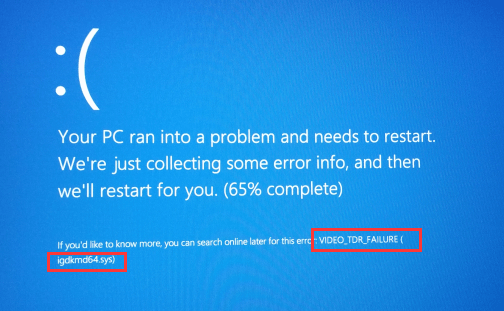
If you're with Intel graphics card and you're seeing the blue screen of death error with the code VIDEO TDR FAILURE , you're not alone. Many Windows users are reporting this problem as well. But no worries, it's possible to fix, no matter how dreadful it seems.
5 fixes for VIDEO TDR FAILURE
- What is VIDEO TDR FAILURE blue screen of death?
- 1: Run System File Checker
- 2: Restore graphics card driver
- 3: Uninstall or disable graphics card driver
- 4: Update video card driver
- 5: Repair corrupted system files with Reimage
Here are 4 fixes for you to try. You may not have to try them all; just work your way down until you find the one works for you.
What is VIDEO TDR FAILURE blue screen of death?
TDR stands forTimeout,Detection, andRecovery components in Windows. If you're seeing this notification, the most likely reason is that your graphics card driver stops responding. Windows might stop and restart the driver to fix the problem. You'll need to be logged into Windows on the problem computer to try any of these solutions. If you can't log into Windows, power on and off your PC 3 times to perform a hard reboot and restart it in Safe Mode, then try these solutions.
1: Run System File Checker
Corrupted or faulty system files could be the lead cause of a Video TDR Failure error. You can run System File Checker to help you fix it: 1) On you keyboard, press theWindows logo key and S at the same time, typecmd. Right-clickCommand Prompt and clickRun as administrator.
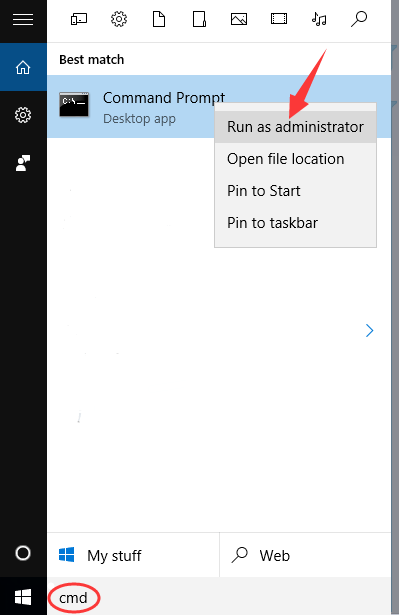
2) Type sfc/ scannow and pressEnter.
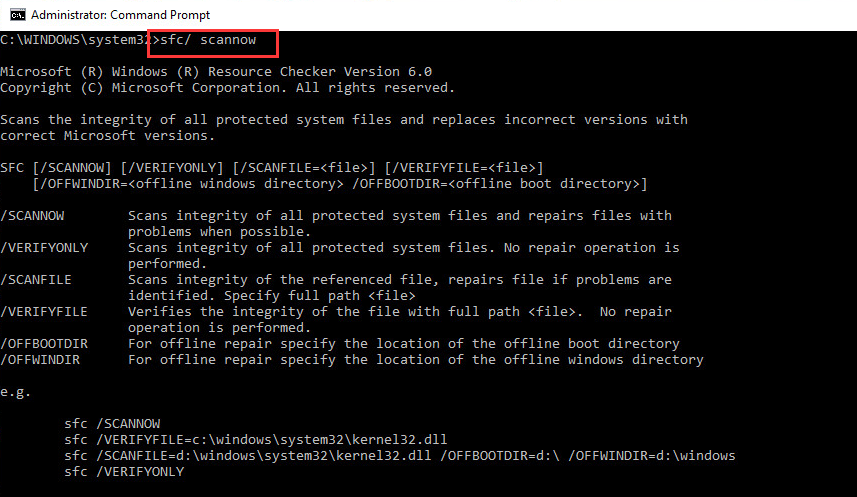
3)System File Checker will help you scan for the corruptions in your system files and restore the corrupted or missing files.
2: Restore graphics card driver
If this problem happens after you updated your graphics card driver, roll it back to previous stage: 1) On your keyboard, press theWindows logo key andR at the same time. ClickDevice Manager.
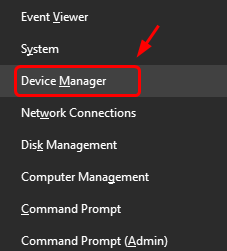
2) ExpandDisplay adapters. Right-click your Intel Graphics card device driver and clickProperties.
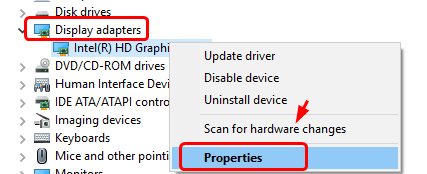
3) ClickDriver tab, clickRoll Back Driver.
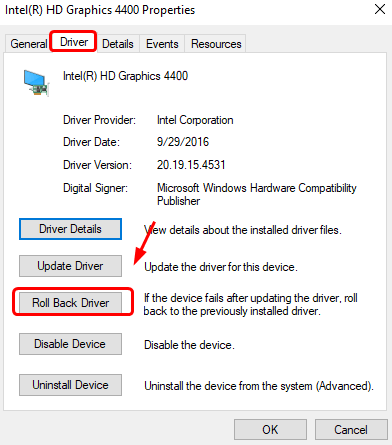
4) Restart your computer after this change. If theRoll Back Driver option here is grey like the following screen shot, skip to the next method.

3: Uninstall or disable graphics card driver
If you have more than one graphics cards, there could be conflict among them. You can try uninstall or disable some with only one left: 1) On your keyboard, press the Windows logo key and R at the same time. Click Device Manager.

2) ExpandDisplay adapters. Right-click your Intel Graphics card device driver and clickDisable device.
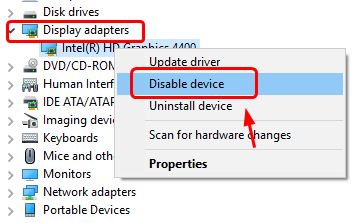
3) If the problem persists, go back to step 2) and clickUninstall device this time.
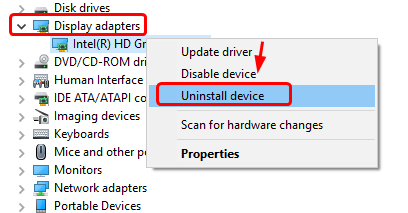
Tick the box forDelete the driver software for this device and clickUninstall.
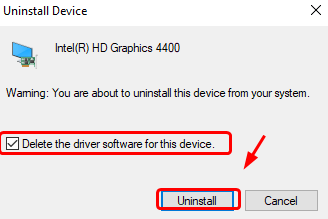
4) Restart. This change will allow Windows Update to help you find the correct driver for your system that won't cause conflicting problem within the two graphics drivers.
4: Update video card driver
If the steps above don't resolve yourVIDEO TDR FAILURE (igdkmd64.sys) problem in Windows 10, it's suggested that you update your graphics card driver. You can automatically update all your device drivers to the latest correct version withDriver Easy.
Driver Easy will automatically recognize your system and find the correct drivers for it. You don't need to know exactly what system your computer is running, you don't need to risk downloading and installing the wrong driver, and you don't need to worry about making a mistake when installing.
You can update your drivers automatically with either the FREE or the Pro version of Driver Easy. But with the Pro version it takes just 2 clicks (and you get full support and a 30-day money back guarantee):
1)Download and install Driver Easy.
2) Run Driver Easy and clickScan Now button. Driver Easy will then scan your computer and detect any problem drivers.

3) Click theUpdate button next to the flagged Intel graphics card driver to automatically download and install the correct version of that driver (you can do this with the FREE version). Or clickUpdate Allto automatically download and install the correct version of all the drivers that are missing or out of date on your system (this requires thePro version – you'll be prompted to upgrade when you click Update All).

5: Repair corrupted system files with Reimage
Reimage Windows repair works by replacing system files automatically. It's like a clean Windows reinstallation in one hour, without losing any programs, settings or user data.
1) Download and install Reimage.
2) Open Reimage and it might take 3~5 minutes to analyze your PC. Sit back and grab a cup of coffee. Once complete, you will be able to review the detailed scan report for free.
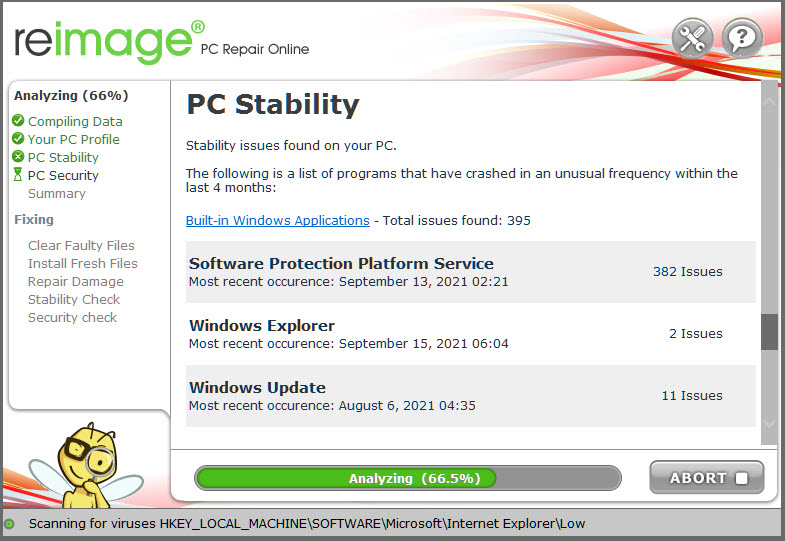
3) Repair and restore any corrupted files. You will need to purchase a license key to do so, and don't pressure it for it has a 60-day money-back guarantee.
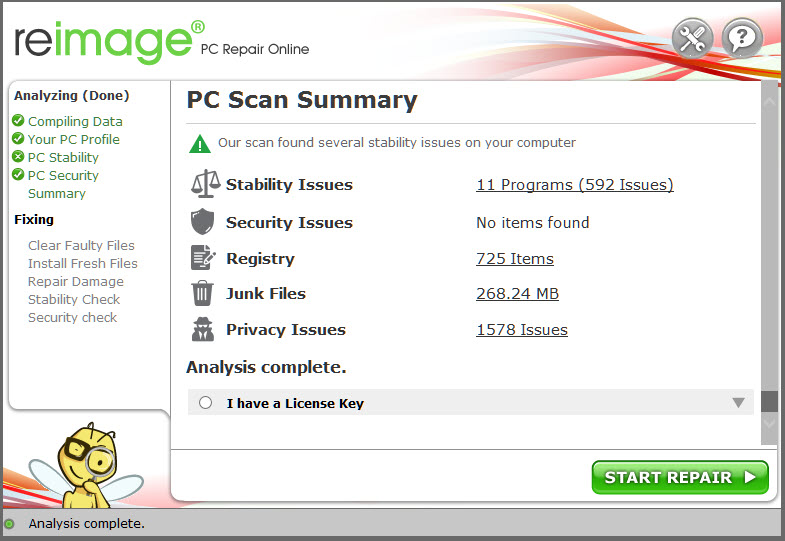
4) Enter your license key and the restoration will begin automatically. Reimage handles all.
Note: If you need any assistance, click the question mark on the upper-right corner of the software.
18
18 people found this helpful
Source: https://www.drivereasy.com/knowledge/igdkmd64-sys-video-tdr-failure-bsod-error-windows-10/
0 Response to "Can a Failing Cup Cause a Blue Screen"
Post a Comment